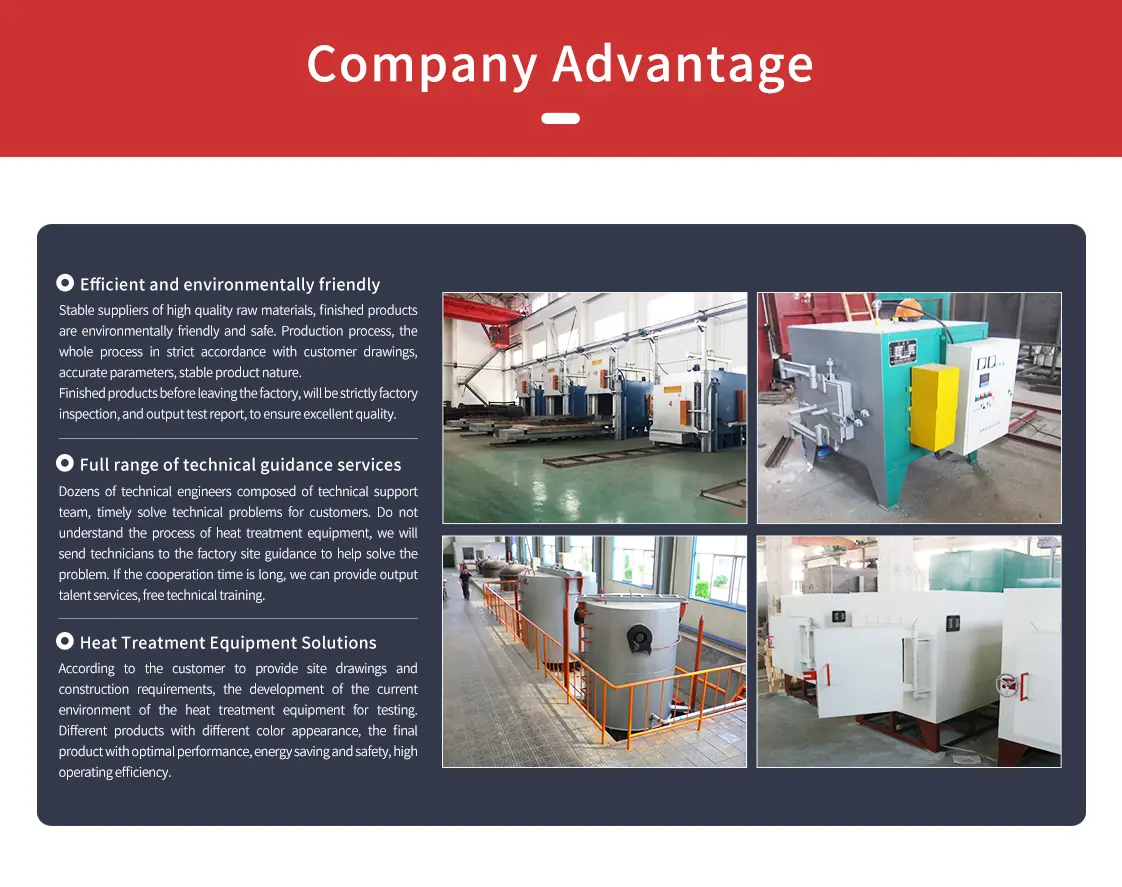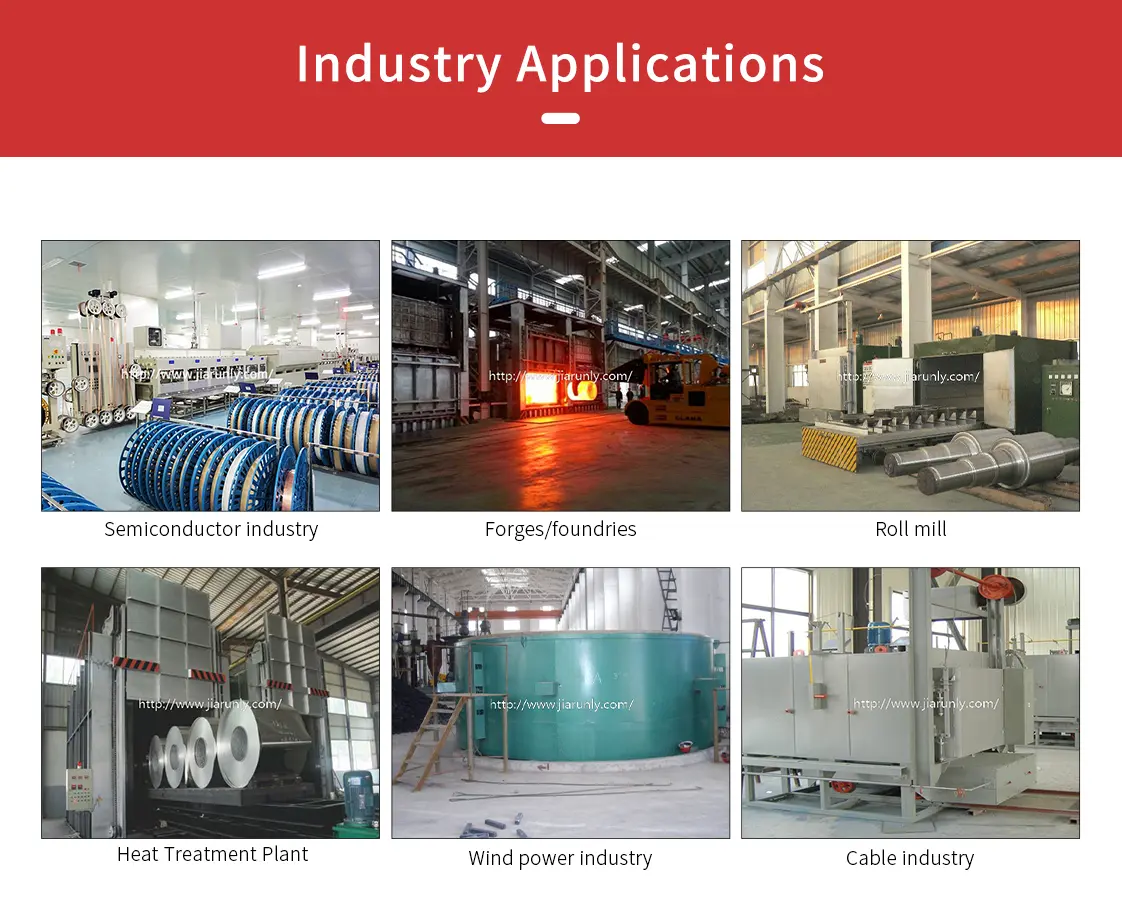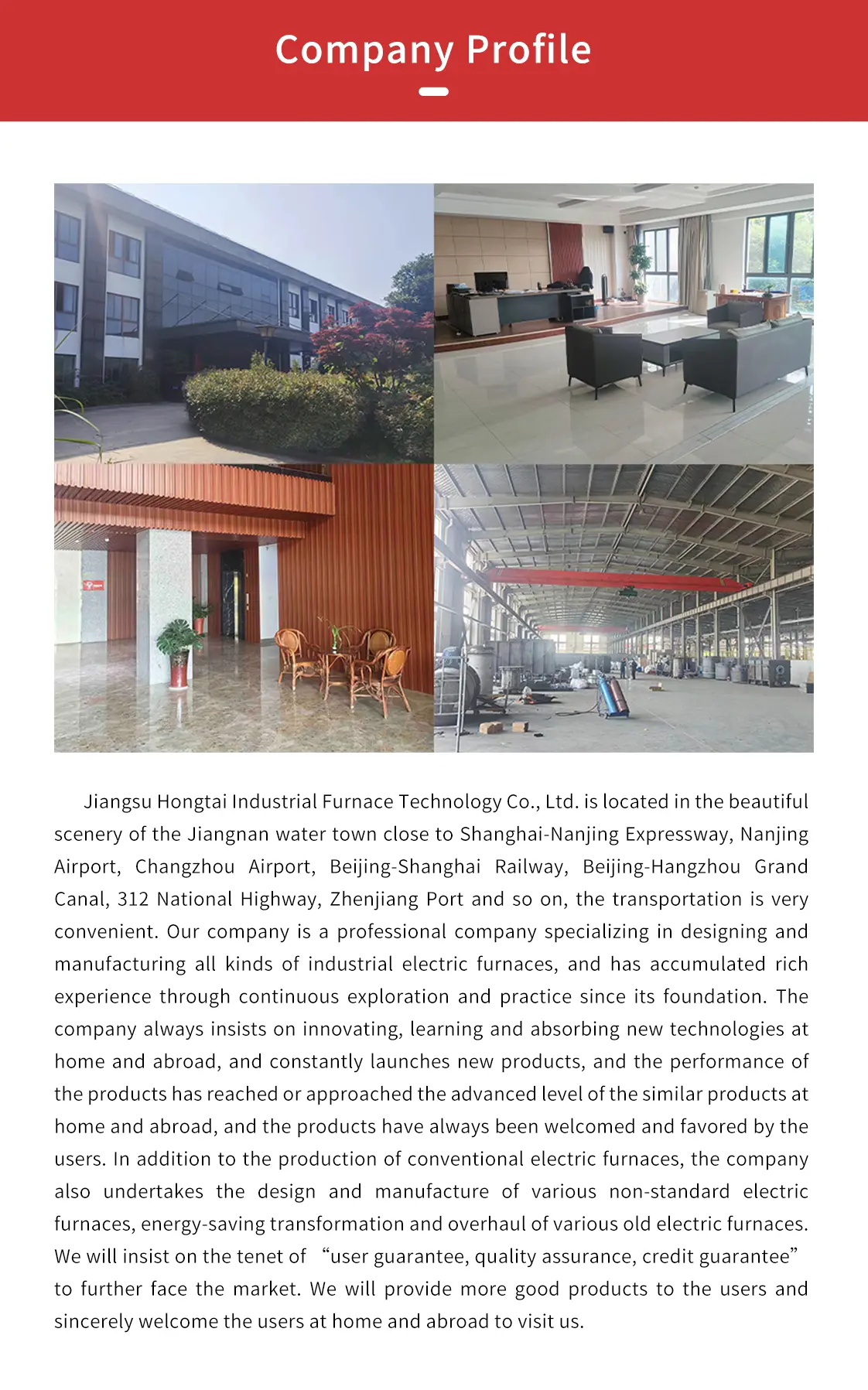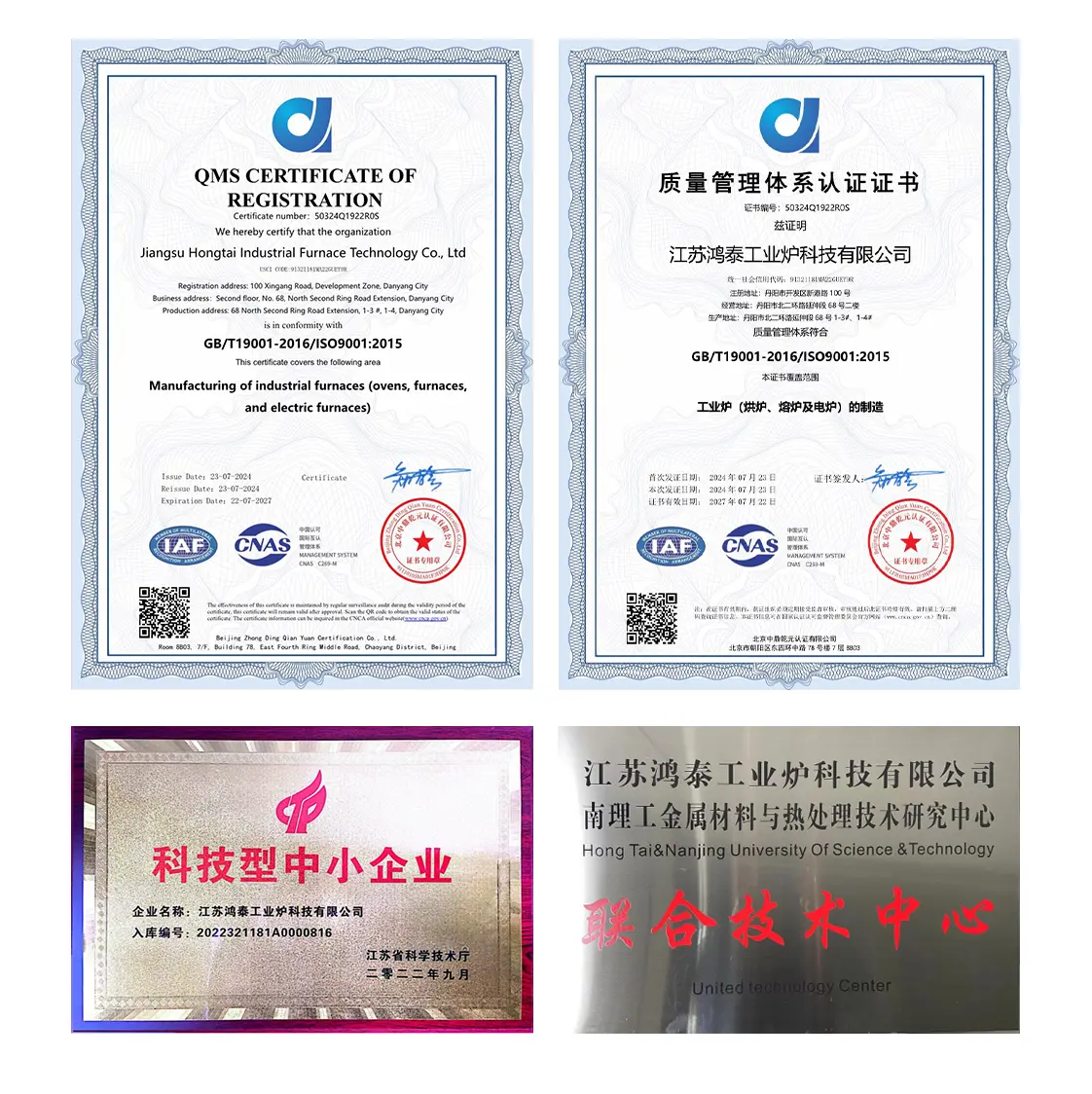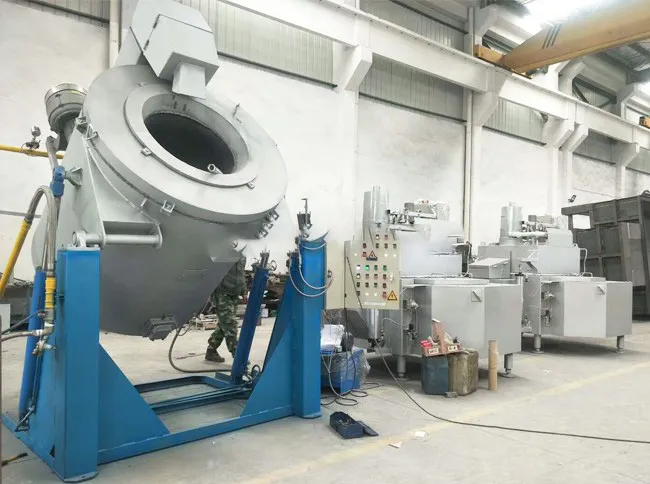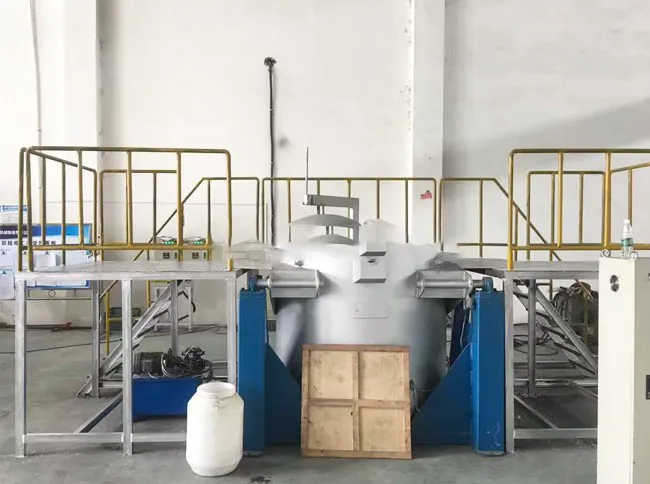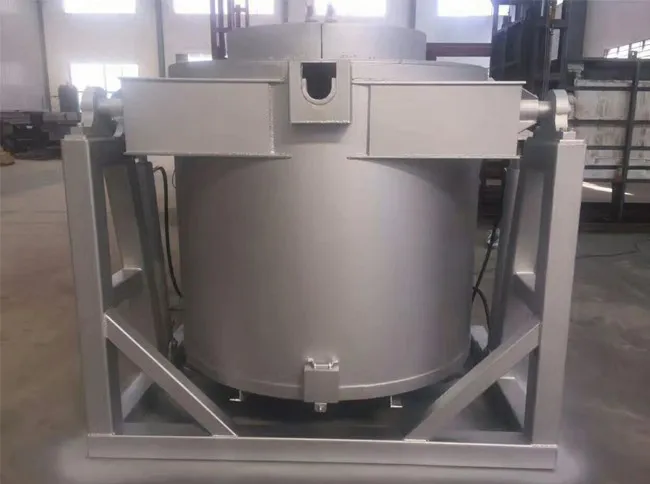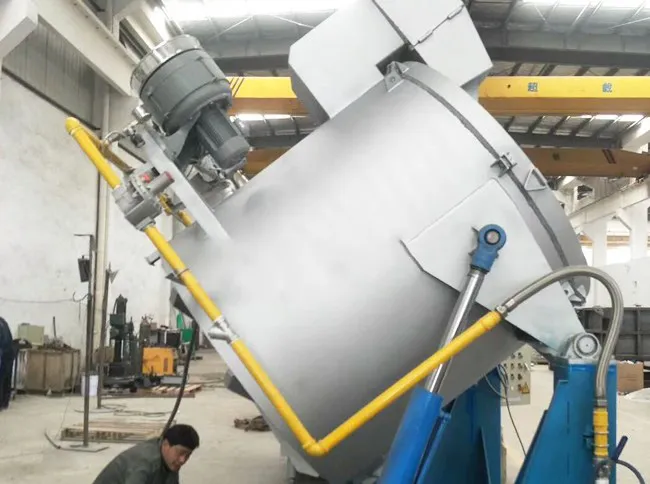- Vacuum furnace & oven
- Annealing Furnace & Oven
- Tempering furnace & oven
-
Carburizing furnace & Ovens
-
Bell Type Furnace
-
Pit Type Furnace & Well Type Furnace
-
Box Furnace & Chamber Furnace
-
Car Bottom Furnace & Bogie Hearth Furnace
-
Nitriding furnace & Ovens
-
Melting furnace & Ovens
- Quenching furnace & Ovens
-
Rapid quenching furnace & Ovens
- Forging furnace & Ovens
- Bright heat treatment furnace & Ovens
Melting Furnace & Ovens
Heat treatment furnace manufacturer,Jiangsu Hongtai Industrial Furnace Technology Co., Ltd
The melting furnace is an energy-saving cycle operation industrial furnace, the shell is made of steel plate and section steel welding, and the furnace lining is made of lightweight micro-bead energy-saving refractory bricks compounded with fiber.
Melting Furnace & Ovens
Efficient Metal Melting Solutions
Product Introduction
Our Melting Furnaces and Ovens are engineered for the efficient and precise melting of various metals and alloys, crucial for high-quality casting, refining, and material preparation processes. These furnaces are designed to achieve and maintain the high temperatures required to liquefy metals like steel, aluminum, copper, and precious metals, ensuring a homogeneous molten mixture. We offer a range of melting solutions, including induction furnaces, crucible furnaces, and reverberatory furnaces, each optimized for specific applications and material types. With robust construction, advanced heating technologies, and precise temperature control, our melting furnaces deliver reliable performance, energy efficiency, and consistent melt quality, making them indispensable for foundries, metallurgical plants, and research facilities.
Key Advantages of Our Melting Furnaces & Ovens
- High Melting Efficiency: Advanced heating technologies ensure rapid and energy-efficient melting of various metals and alloys.
- Precise Temperature Control: State-of-the-art control systems maintain accurate temperatures for optimal melt quality and consistency.
- Versatile Applications: Suitable for melting a wide range of ferrous and non-ferrous metals, including steel, aluminum, copper, brass, and precious metals.
- Homogeneous Melt Quality: Designed to produce uniform molten mixtures, crucial for high-quality casting and material properties.
- Robust & Durable Construction: Built with high-quality, refractory materials for long operational life and minimal maintenance in demanding foundry environments.
- Energy Optimization: Efficient insulation and heating methods reduce energy consumption and operating costs.
- Safety Features: Equipped with comprehensive safety mechanisms to protect operators and ensure reliable operation.
- Customizable Solutions: Available in various capacities and configurations to meet specific production needs and space requirements.
Technical Specifications
| Parameter | Unit | Range/Value | Notes |
|---|---|---|---|
| Maximum Operating Temperature | °C | Up to 1800 (depending on model and application) | Higher temperatures available for specialized alloys |
| Capacity | kg | From 10 to 70,000+ | Customizable for various batch sizes |
| Heating Method | - | Electric Induction, Gas-Fired, Electric Resistance | Selected based on metal type, efficiency, and cost |
| Melting Speed | - | Varies by metal and furnace type | Typically 15-60 minutes for common metals |
| Temperature Accuracy | °C | ±5 to ±10 (typical) | Ensures consistent melt quality |
| Power Supply | - | Customizable (e.g., 3-phase, various voltages) | Designed to integrate with existing infrastructure |
| Control System | - | PLC-based with HMI, PID control | Automated and programmable for precise operation |
Working Principle
Melting furnaces operate on the principle of generating and transferring sufficient heat to materials to reach and exceed their melting point, transforming them from solid to liquid states. The specific working principle varies depending on the type of furnace. For instance, induction melting furnaces utilize electromagnetic induction: a powerful alternating current flows through a coil, creating a rapidly reversing magnetic field that induces eddy currents within the metal charge. This resistance to the eddy currents generates intense heat directly within the metal, causing it to melt. Gas-fired and electric resistance furnaces, on the other hand, transfer heat primarily through convection and radiation from combustion or heating elements to the metal. Regardless of the heating method, the core objective is to achieve and maintain a homogeneous molten pool, often followed by pouring into molds for casting or further refining processes. Precise temperature control and efficient heat transfer are critical to ensure optimal melt quality and energy consumption.
Process Flow
Material Charging
Raw metal or alloy ingots are loaded into the furnace crucible or chamber.
Heating & Melting
The furnace heats the material to its melting point, transforming it into a liquid state.
Holding & Refining
The molten metal is held at a precise temperature, allowing for alloying or refining processes.
Pouring & Casting
The molten metal is poured into molds or transferred for further processing.
Solving Customer Pain Points
High Energy Consumption & Operating Costs
Our furnaces feature energy-efficient designs, including advanced insulation and optimized heating methods, significantly reducing power consumption and lowering operational expenses.
Inconsistent Melt Quality & Material Loss
Precise temperature control and homogeneous melting capabilities minimize material burning loss and ensure consistent, high-quality molten metal for superior end products.
Slow Melting Rates & Low Throughput
Designed for rapid heating and efficient melting, our furnaces significantly reduce cycle times, boosting production throughput and overall operational efficiency.
Safety Concerns in High-Temperature Operations
Equipped with multiple safety interlocks, robust construction, and advanced monitoring systems, our furnaces prioritize operator safety and prevent accidents in high-temperature environments.
Limited Versatility for Different Metals
Our diverse range of melting furnaces supports various metal types and melting processes, offering the flexibility needed for different industrial applications and alloy compositions.
High Maintenance & Downtime
Built with durable components and designed for easy access, our furnaces require minimal maintenance, reducing downtime and ensuring continuous production.
Customer Success Story
A major automotive parts manufacturer implemented our induction melting furnace for their aluminum casting line. They experienced a 20% reduction in energy consumption and a 15% increase in melting speed, leading to significant cost savings and improved production efficiency. The consistent melt quality also resulted in fewer casting defects and higher product reliability.
Customization & Support
We offer extensive customization options for capacity, heating method, and control systems to perfectly match your specific melting requirements. Our expert team provides comprehensive support from design and installation to training and after-sales service, ensuring seamless integration and optimal performance for your melting operations.
Related Keywords
melting furnace, metal melting, induction melting, crucible furnace, industrial melting oven, alloy preparation, casting, foundry equipment, aluminum melting, steel melting, precious metal melting, high temperature furnace
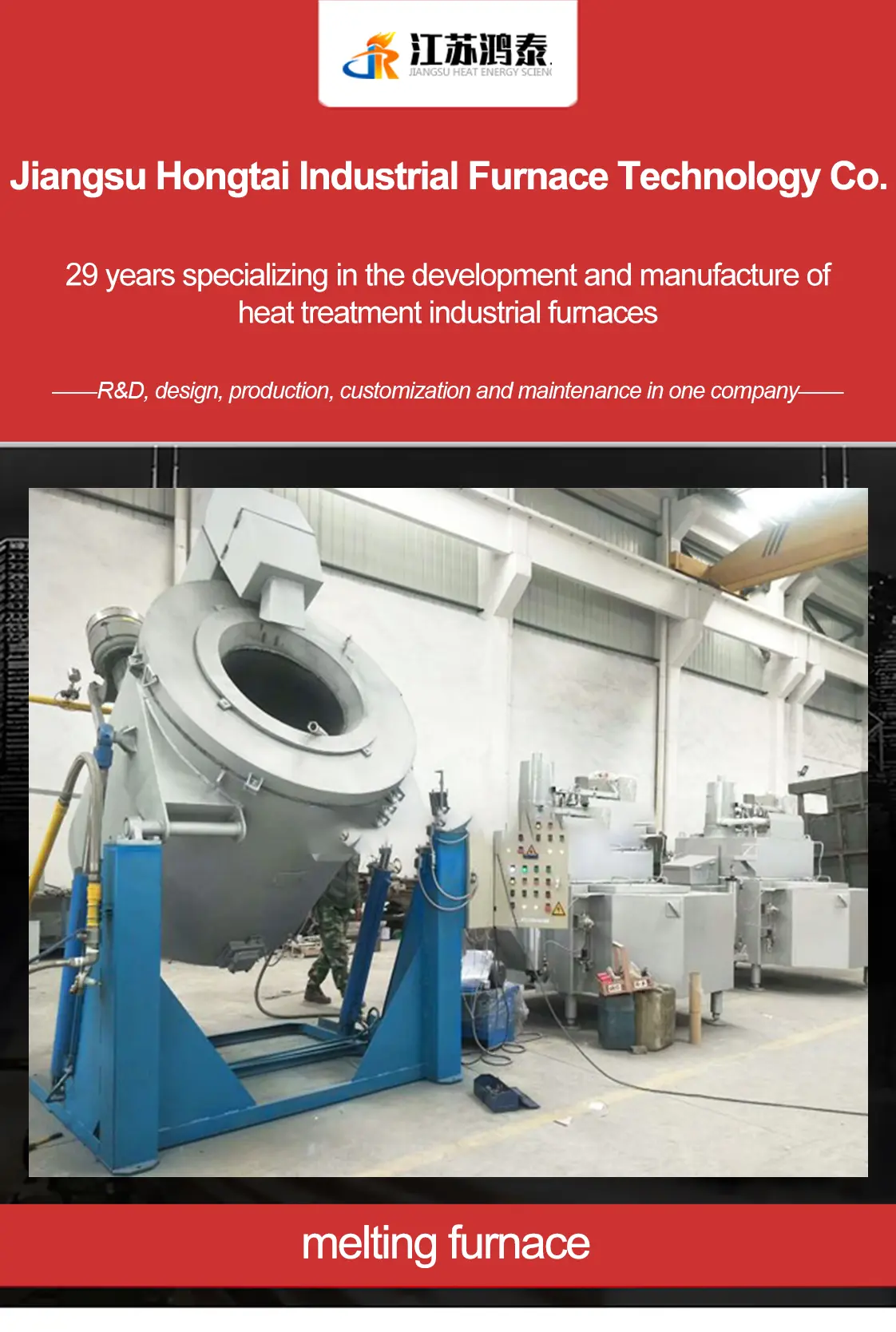
Melting Furnace &Oven Technology: Principles and Applications
1. Fundamental Working Mechanisms
Melting ovens operate on thermal energy conversion principles to transform solid materials into liquid states. The core technology involves three critical phases:
Charge Preheating Stage:Utilizes waste heat recovery systems to preheat aluminum scrap up to 300°C before melting, reducing energy consumption by 25% in automotive wheel production
Molten Pool Dynamics:Electromagnetic stirring in induction furnaces creates controlled convection currents, ensuring homogeneous alloy composition for aerospace-grade titanium ingots
Atmosphere Control:Oxygen probes and gas injection systems maintain reducing environments during copper refining, preventing oxide inclusion in electrical conductor production
2. Advanced Metallurgical Processes
Precision Alloying: Computer-controlled feeder systems introduce alloying elements at optimal temperature windows (e.g., adding chromium to stainless steel at 1550±10°C)
Slag Engineering: Designed slag compositions in steelmaking furnaces actively absorb phosphorus and sulfur, improving pipeline steel toughness
Superheat Management: Infrared pyrometers monitor superheat levels in aluminum holding furnaces, preventing dendrite formation in beverage can stock
3. Industrial Value Chain Integration
The strategic positioning of melting technology enables:
60% material yield improvement in die-casting plants through closed-loop scrap recycling
80% reduction in rare earth metal losses during neodymium magnet production
35% shorter lead times for shipbuilding steel plates via continuous charging systems
Representative Applications:
Single-crystal silicon ingots for photovoltaic cells
Nickel-based superalloy electrodes for additive manufacturing
High-purity zinc anodes for galvanizing lines
Melting furnace & oven furnace type introduction:
The melting furnace is an energy-saving cycle operation industrial furnace, the shell is made of steel plate and section steel welding, the furnace lining is made of lightweight micro-bead energy-saving refractory bricks compounded with fibers, the heating element is made of 0Cr25AI5 high-resistance alloy wires, and the melting temperature is automatically controlled by the fully automatic temperature control cabinet. The furnace is equipped with cast iron crucible or standard graphite crucible.
Use of melting furnace:
Melting furnace is mainly for melting or melting aluminum, zinc, lead, magnesium, tin, cadmium and other non-ferrous metals and alloys with low melting point, used for melting aluminum, melting lead can be matched with die-casting machine, can also be used for aluminum heat preservation, degassing, refining.
Melting furnace classification:
1. Melting furnace according to the melting of different gold, different specific gravity, different structural design, so can be divided into: melting aluminum furnace, melting lead furnace, magnesium alloy melting furnace, galvanizing furnace, chemical glue furnace and so on.
2. Various heating methods make the melting furnace body structure and melting speed are different: electric heating melting furnace, fuel melting furnace, gas melting furnace.
3. Whether the crucible is used in the design of the melting furnace also makes the melting furnace have the following two kinds: crucible melting furnace, no crucible melting furnace.
Brief introduction of each series of melting furnace
Tiltable Crucible Fast Melting Furnace: Hankou Electric Furnace professional products can be tilted crucible fast melting furnace, mainly for rapid melting of aluminum ingots, aluminum liquid heat preservation, casting of aluminum, the use of professionally designed double cylinder hydraulic tilting furnace, tilting mechanism is conducive to the realization of the automation of the production line of the melting furnace, the planning of a more advanced melting furnace workshop, more convenient way of operation of the melting of aluminum.
Crucible Melting Furnace: GR2 series crucible melting furnace is an energy-saving cyclic operation melting furnace, mainly for melting or smelting aluminum, zinc, lead, tin, cadmium and other low melting point non-ferrous metals and alloys, can be used for melting aluminum, lead melting and die-casting machine.
Magnesium alloy melting furnace
Magnesium Alloy Melting Furnace: Hankou Electric Furnace specializes in manufacturing magnesium alloy melting furnace is the introduction of new foreign technology melting furnace series, due to the magnesium alloy melting, heat preservation, heat treatment and other production processes will be combustion and explosion can not be used in the general aluminum alloy melting furnace must be used in special magnesium alloy melting furnace.
Magnesium alloy heat treatment furnace: Hankou Electric Furnace developed magnesium alloy heat treatment furnace for high uniform temperature and high precision heat treatment furnace, mainly used in the aviation manufacturing industry, magnesium alloy quenching, magnesium alloy solid fusion heat treatment. Adopting microcomputer program automatic temperature control, high-precision implementation of high-precision magnesium alloy solid melting process curve.
Crucible lead melting furnace
Crucible lead melting furnace: GR2 series crucible lead melting furnace is energy-saving lead melting furnace mainly for melting lead, aluminum, lead liquid heat preservation, etc., and with the quantitative die-casting, and die-casting machine supporting, can be used for the manufacture of accumulator batteries Fuel Crucible Lead Melting Furnace: Hankou Electric Furnace made of fuel oil crucible melting furnace using fuel oil melting lead, lead, and lead liquid heat preservation, can be rationed die casting, and die casting machine supporting, compared with the electric furnace lead melting speed faster, greater output. The crucible melts lead faster and with higher output than electric furnace.
Natural gas crucible melting aluminum furnace: using natural gas as fuel, heat-resistant alloy cast steel crucible, can be used for melting aluminum or melting aluminum alloy, applying advanced imported burner to realize combustion.
Square Crucible Hot-dip Galvanizing Furnace
Crucible-less fuel oil melting aluminum furnace: adopts original imported precision fuel oil machine, the furnace chamber adopts non-stick aluminum furnace lining, the furnace lining has a long life and is not easy to be damaged.
Square Crucible Hot-dip Galvanizing Furnace: This series of energy-saving cycle-operated square crucible hot-dip galvanizing furnace with working temperature of 500℃ can be used for hot-dip galvanizing of small metal parts, standard parts or large and long metal parts.
Crucible glue melting furnace: mainly used in printing industry, bookbinding melting glue, and imported printing machinery supporting, replacing imported products.
Melting furnace temperature up to 1000 ° ° C, 1300 ° ° C and 1500 ° ° C. Melting temperature is relatively low 80-110 ℃.
Temperature 1000, 1300 or 1500, melting temperature is about 80-110 low
Crucible capacity 0.75, 1.5 or 3 liters
